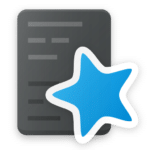
Build a Strong Japanese Core Vocabulary from Your First 100 to Beyond 6,000
Learning a new language involves learning lots of new words, and not all words are equal.
Some are used differently than in English, some might embarrass me if used incorrectly and others I might simply never use.
A strong Japanese core vocabulary is important for being able to communicate, but there’s more to learning words than just memorizing the dictionary.
This post will discuss how to decide which words to learn, how many words you should learn… and how to know when to stop.
Contents
- Which Words Should You Learn to Build Your Japanese Core Vocabulary?
- How Many Japanese Core Vocabulary Words Should You Learn?
- Japanese Core Vocabulary Learning Made Easy
- And One More Thing...
Download: This blog post is available as a convenient and portable PDF that you can take anywhere. Click here to get a copy. (Download)
Which Words Should You Learn to Build Your Japanese Core Vocabulary?
It’s important to understand that words are a means to communicate ideas; they’re tools that enable us to share our thoughts with others. The most valuable words are the ones that allow us to communicate our ideas to others with more ease.
Let’s say you know 20 words, but you don’t know the word “not.” You could learn a word like “slowly,” which is also an important word, but it’s relatively much less important than “not.” Learning just one word effectively doubles the amount of ideas that you can express. On the other hand, the word “slowly” only enables you to modify ideas you can already express. Because of this, “not” is a higher-priority word than “slowly.”
Beyond fundamental words like “not,” however, these judgment calls quickly become very subjective. The same word might be important to one person but not very important to another person. As a tea fanatic in Taiwan, the word “tapioca” was one of the first I learned, and I use it just about every day—but another person might never need this word.
Just because a word is in a vocab list doesn’t mean it’s useful for you, personally. Only you can decide that.
I can’t tell you exactly which words to learn but I can offer a few rules of thumb for learning words at various stages of your language-learning journey:
- Beginner: This word must enable me to do some concrete task that I can’t do right now.
- Intermediate: This word must have the potential to be used in my next conversation.
- Advanced: This word must be interesting to me and I can see myself using it sometime.
How Many Japanese Core Vocabulary Words Should You Learn?
If you’ve spent any time trying to figure out how many words you need to learn then you might have stumbled across the Pareto principle.
The Pareto principle basically states that 80% of the results for something tend to come from about 20% of the effort you put into it. That sounds pretty great at first, especially if you’ve also heard the claim that you only need a few thousand words to understand 70% or 80% of a language. But what does that actually mean?
You can see what 80% comprehension feels like in an article from Sinosplice. I think you’ll agree that this is a little… underwhelming.
Research on word frequency and literacy lets me feel comfortable inferring two things:
1. Most people are going to want more than an 80% comprehension.
2. Actively learning words becomes less and less valuable over time.
It seems generally accepted that we need around 98% comprehension to read comfortably, which means that about one in 50 words on a given page will be new.
But how we go about achieving that 98% comprehension rate is a hazier matter. What’s very clear is that learning vocabulary gives us a lot of bang for our buck in the beginning of our studies but quickly becomes less valuable.
According to an article by I.S.P. Nation, the first 1,000 words learned will net around a 78% comprehension rate of a typical contemporary novel or movie. The first 1,000 words are incredibly valuable and should definitely be memorized.
However, things quickly go downhill after that.
The second 1,000 words learned is still quite significant, yielding 8% more comprehension.
The third 1,000 gives another 3%, the fourth another 2% while the fifth one yields less than 1% per 1,000 words learned.
In other words, it quickly becomes not all that practical to intentionally study vocabulary. After a little more than a year of learning 10 words per day, people will have the vocabulary to understand ~90% of a given non-specialized text/dialogue, but devoting another year to vocab only brings them to about 95%.
This second year could probably be better spent doing basically anything else, and if you’re engaging with media in the language, you’ll pick up the words that you need to understand the language naturally, anyway—especially if you’re actively looking for chunks in that media to use for yourself.
Japanese Core Vocabulary Learning Made Easy
Your First 100 Words
The goal of your first 100 words is survival. You don’t need to sound great; all you need to do is get from point A to point B as efficiently and simply as possible. In other words, you’ve got two goals: signal what you want and show what you want with it.
Pronouns
Step one is showing what you want, and the most straightforward way to do that is with demonstrative pronouns. A pronoun refers to a person like “he” or “she,” and demonstrative pronouns (“this,” “that”) do the same for places and things.
These words are magical: You don’t need to complete the impossible task of learning specific words like “spaghetti bolognese” or “carborator fluid.” All you need to know is how to say “this.”
これ — this
それ — that
あれ — that (way over there)
“This” and “that” can be anything.
If you want to add a noun, you need to use a different but related set of words:
この人 (この ひと) — this person
その食べ物 (その たべもの) — that food
あのビル (あの びる) — that building (way over there)
There are also pronouns for places:
ここ — here
そこ — there (near the person you’re talking to)
あそこ — there (near neither of you)
Question words
Step two is requesting information about what you’ve just pointed out, so you should definitely learn some question words:
誰 (だれ) — who
何 (なに) — what
いつ — when
どこ — where
どう — how
どうして — why
いくら — how much (money)?
Expressing desire
Or perhaps you’d rather express an interest in the thing you’ve pointed out:
欲しい (ほしい) — wanted / desired
必要 (ひつよう) — necessary / needed
Common words
You’ll definitely need a few common words:
おいしい — delicious
良い (よい) / いい — good
悪い (わるい) — bad
食べる (たべる) — to eat
行く (いく) — to go
買う (かう) — to buy
はい — yes
いいえ— no
Numbers
You’ll also need to know some some basic counting words:
一つ (ひとつ) — one (thing)
二つ (ふたつ) — two (things)
三つ (みっつ) — three (things)
You might feel a little cheated by this (“What? Only three numbers!?”), but counting in Japanese is actually quite complex. Different words are used to say “one, two, three” and “one (small thing), two (small things), three (small things)” or “one (flat thing), two (flat things), three (flat things).”
It’s complicated enough that we’ve actually written an entire article explicitly dedicated counting from one to 10 in Japanese. If you want to learn more than just the first three numbers, check it out.
Common phrases
Finally, you might want to learn a few phrases that you’ll probably hear all over Japan to round things off:
大丈夫 (だいじょうぶ) — everything is okay
しょうがない — it can’t be helped
ちょっと待ってください (ちょっと まって ください) — wait a second, please
おはようございます — good morning
こんにちは — good afternoon/hello
こんばんは — good evening
さようなら — good-by
バイバイ (ばいばい) — bye-bye
Putting it all together
You’ll have to prepare a little bit to use these words because Japanese sentence structure and order differs from that of English. But so long as you’re making really simple statements, you might just think about saying what you want to say in English, but backwards:
これ、何?(これ、なに?) — What is this? (Literally: “This, what?”)
あの人、誰?(あの ひと、だれ?) — Who is that person? (Literally: “That person, who?”)
この食べ物、おいしい? (この たべもの、おいしい?) — Is this food delicious? (Literally: “This food, delicious?”)
これ、一つください!(これ、ひとつ ください!) — One of these, please! (Literal”This, one please!”)
This is a pretty good list to get you started, but I’d like to emphasize again that you shouldn’t just arbitrarily learn words on a list just because someone tells you to do so.
To fill out your first 100 words, you can look through a list of 1,000 basic Japanese words, a post devoted to 80 basic Japanese words and phrases or a Memrise deck of the 1,000 most common Japanese words.
Which ones will you need in your everyday life?
Your First 2,000 Words
If the first 100 words are about survival, then the next 1,900 are about comfort. When you only know 100 words, even mundane tasks become a really creative adventure. But as you approach 2,000 core vocabulary words, your daily life becomes progressively simpler.
You won’t be able to describe whatever you want with pinpoint accuracy but you also won’t have to worry about running into situations that you simply can’t deal with due to a language barrier.
Thankfully, there’s also a silver-bullet of resources for this step: the Japanese Core 2000 on Anki.
This is an electronic flashcard deck featuring the 2,000 most common Japanese words. Every card features a picture and example sentence that’s read by a native Japanese person, meaning that you can practice shadowing what you hear in order to develop a more natural pronunciation and intonation while you’re getting your basic words down.
Set your Anki new-words counter to 10 per day, follow along and in a bit more than half a year you’ll have a Japanese vocabulary suitable to accomplish basically any daily task you may find yourself confronted with.
Another way to learn and study new core words is FluentU.
FluentU takes authentic videos—like music videos, movie trailers, news and inspiring talks—and turns them into personalized language learning lessons.
You can try FluentU for free for 2 weeks. Check out the website or download the iOS app or Android app.
P.S. Click here to take advantage of our current sale! (Expires at the end of this month.)

Finally, you can simply make your own flashcards that fit your needs and goals!
From 2,000 to 6,000 Words
6,000 words is an odd point which on one hand, is more than enough for conversation but on the other hand, not quite enough to read or communicate without effort.
There’s a difference between reading “Charlotte’s Web” and Socrates, between watching a Disney movie and a political interview, so depending on your language goals, you might need more or less words in your word bank.
At this point, things also begin to slow down. Remember that words 2,000 to 4,000 net around another 4% comprehension, 4,000 to 6,000 another 2%. In other words, even if you keep learning 10 new words per day, the improvement will be much more gradual and less noticeable.
Once you’ve thoroughly learned your first 2,000 words, you can move on to other Anki decks, like part 2 and part 3 of the series. Or, you can branch out your learning to other SRS-based resources. There are plenty of SRS learning programs available, many of which allow you to make your own decks.
Which leads us to our next step:
6,000 Words and Beyond
If things slowed down in the last step, then they turn into molasses here—each new 1,000 words you learn will amount to less than 1% additional comprehension.
The other side of that coin is that this is the stage where your language really gets personal. Up until now, you’ve been learning general words needed by pretty much everyone to communicate, but now you get to learn the words that you need on a personal level. It’s time to do you!
Read, watch anime or dramas, listen to music… whatever! Pay attention to words that seem useful to you. Your level is constantly changing and so will the words you find to be useful.
My rule of thumb is that I have to reasonably believe that I’ll use the word I’m about to write down in a foreseeable conversation, otherwise I don’t write it down and will content myself with knowing that I’ll “eventually” learn it from exposure.
At this point, you might look into sentence mining, which pulls full sentences from resources you’re consuming and turns them into study points.
You can also shake things up by creating fill-in-the-blank flashcards by leaving out key words in a sentence and placing them on the other side of the card (if you’re still using Anki, the program allows you to automate this through Cloze Deletion flashcards).
This adds a bit more structure to your consumption while also ensuring that the time you do spend studying is 100% relevant to your interests and needs.
A Note on Frequency Lists
Frequency lists are great because they give you a solid starting point. But remember that they must be compiled from somewhere and it’s obviously impossible to have a continually evolving corpus of spoken language.
A lot of the words in frequency lists are taken from newspapers that are fed through text analysis programs, meaning the 2,000 words you’re learning are really the 2,000 words that are most likely to appear in the news.
This leads to some funny situations where a word like 撤退 (てったい) — evacuation is ranked at 1,568, whereas カレー (かれー) — curry is 7,095. Having lived two years in Japan, I definitely say “curry” about a million times more than “evacuate.”
So, again, you don’t have to learn every single word in the list of cards you’re studying. If you don’t think you’ll ever use a word, skip it for now.
Vocabulary acquisition is an exciting adventure because it’s one of few things in life that’s almost guaranteed. So long as you’re consistently spending time practicing new words, you’ll consistently learn new ones.
Just remember to have an end goal in sight, a place where you’re aiming to use these words you’ve learned—after all, you want to spend your time having fun in Japanese, not staring at flashcards!
Download: This blog post is available as a convenient and portable PDF that you can take anywhere. Click here to get a copy. (Download)
And One More Thing...
If you love learning Japanese with authentic materials, then I should also tell you more about FluentU.
FluentU naturally and gradually eases you into learning Japanese language and culture. You'll learn real Japanese as it's spoken in real life.
FluentU has a broad range of contemporary videos as you'll see below:

FluentU makes these native Japanese videos approachable through interactive transcripts. Tap on any word to look it up instantly.

All definitions have multiple examples, and they're written for Japanese learners like you. Tap to add words you'd like to review to a vocab list.

And FluentU has a learn mode which turns every video into a language learning lesson. You can always swipe left or right to see more examples.

The best part? FluentU keeps track of your vocabulary, and gives you extra practice with difficult words. It'll even remind you when it’s time to review what you’ve learned. You'll have a 100% personalized experience.
Start using the FluentU website on your computer or tablet or, better yet, download the FluentU app from the iTunes or Google Play store. Click here to take advantage of our current sale! (Expires at the end of this month.)




